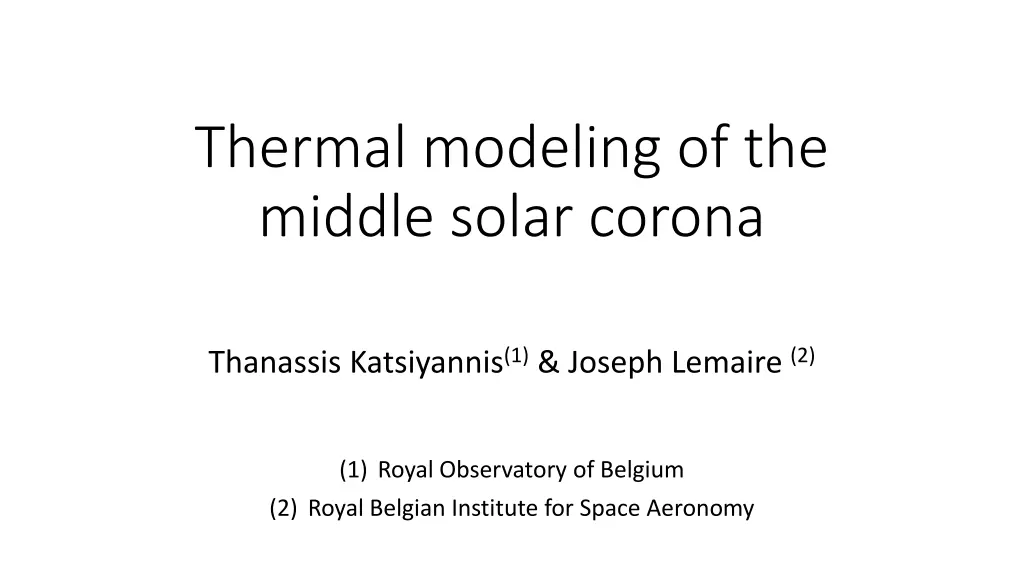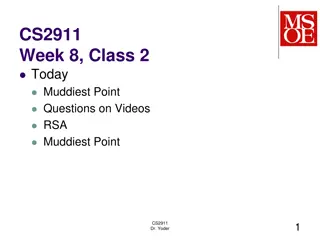
Thermal Modeling of the Middle Solar Corona by Katsiyannis & Lemaire
Explore thermal modeling of the middle solar corona by Thanassis Katsiyannis and Joseph Lemaire, incorporating various models to understand temperature distributions and limitations. Future work includes using different observational data for ne(r) and boundary conditions for T(r) to calculate energy flow at radial distances.
Download Presentation

Please find below an Image/Link to download the presentation.
The content on the website is provided AS IS for your information and personal use only. It may not be sold, licensed, or shared on other websites without obtaining consent from the author. If you encounter any issues during the download, it is possible that the publisher has removed the file from their server.
You are allowed to download the files provided on this website for personal or commercial use, subject to the condition that they are used lawfully. All files are the property of their respective owners.
The content on the website is provided AS IS for your information and personal use only. It may not be sold, licensed, or shared on other websites without obtaining consent from the author.
E N D
Presentation Transcript
Thermal modeling of the middle solar corona Thanassis Katsiyannis(1)& Joseph Lemaire(2) (1) Royal Observatory of Belgium (2) Royal Belgian Institute for Space Aeronomy
The DYN model Pottach (1960), Brandt et al (1965) and Gibson et al (1999) used Parker s hydro-dynamical model with T( )=0 and P( )=0. Lemaire & Stegen (2016) added the mH*ne(r)*du/dt factor to Parker s (1958) model: dT(r)/dr + [d(ln ne)/dr]-1+ mH*g * RS2 / (k r2) + mH*ne(r)*du/dt = 0 Lemaire & Stegen (2016) also added a term to Saito (1970) s fit. This was to correct for ne(1AU). Saito (1970) s fit was for h < 3 RS ne(r)= 108[3.09 r-16(1-0.5 sin( )) + 1.58 r-6(1-0.95 sin( )) + 0.0251 r-2.5(1- sin( ))] + ne(1AU) (215/r)2
Temperature distributions / Model limitations ?(?) ? ?2 dx, where ? = mH*g * RS2/ (k r2) T(r)= ?(?) ?
Future Work Use different ne(r) observations as input to the model Use T(r) observations as boundary conditions Calculate the energy flow for all radial distances



